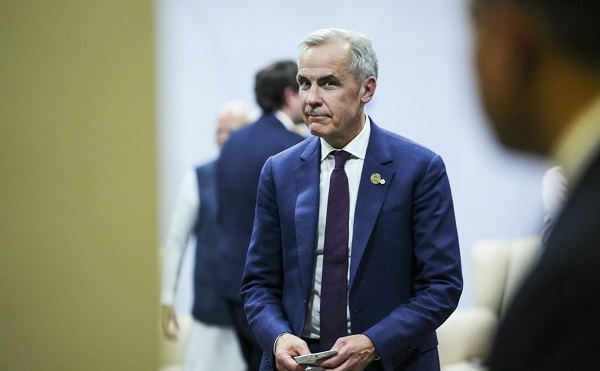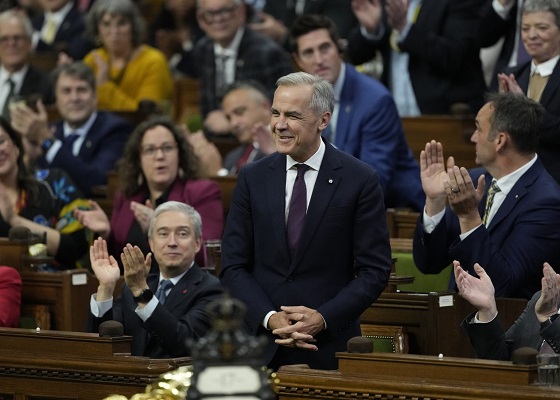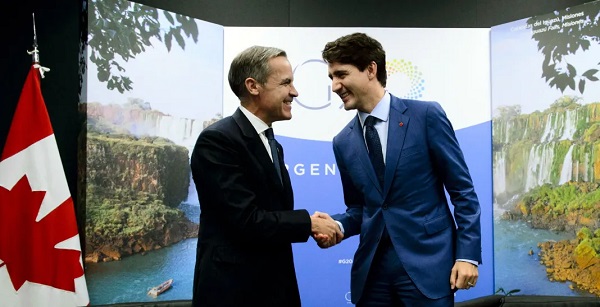Alberta
Hundreds of young athletes grow more anxious by the day – ACAC season a series of “options”

While addicts ponder cross their fingers at every hint the National Hockey League’s big-money dance toward a playoff schedule and perhaps a Stanley Cup final sometime this year might be successful, hundreds of young athletes grow more anxious day by day, hoping they get to play at least part of their schedules in various college sports.
And money is close to the least of the concerns for these kids.
The five-day annual spring meeting of Alberta College Athletic Conference institutions ended a week ago with little clarity on the issue although CEO Mark Kosak and various other officials in the 18-team league came away – mostly – with a positive outlook.
As expected, a wide series of “options and alternate start dates” was devised and analyzed, he said.
A committee established to evaluate likely effects of the coronavirus pandemic will meet at least once a week in preparation for “a really big and important meeting dealing with massive variables” on June 25. Many essential details applying to all sports – when to start a season, length of schedule, possible change of regular play into tournament-style competition – will be put on the table.
Progressively, Aug. 1, a date in September and others in January have been debated in depth.
All options remain open, Kosak said, pointing out that safety of athletes, students, spectators and staff remains as the dominant factor in every discussion. Principals at some institutions have made it clear they do not expect any sports to be played in what normally is the ACAC fall season. Close to 50 per cent of the principals have made clear their concern that moving too quickly in one sport or one schedule might destroy all the good that the current cautious program may achieve. If necessary, all games would have to be sacrificed.
The veteran administrator posed one conservative, hypothetical and frightening prospect: A school from a difficult place (where control of COVID-19 might not be at the ideal level) when it goes to play a road game in a safer area. Then, say, one player on the home team comes down with the virus.
“What options are open if that happens?” Obviously, no organization could possibly benefit from such an occurrence. “I understand fully what those presidents are concerned about. At this point, they’re all justified to be worried about the potential for an outbreak on campus.”
Fortunately, Kosak said, all of the presidents recognize the value of college sports, mentioning the appeal of an athletic event, additional enrolment and potential gate receipts. He did not mention students’ enthusiam when they support a successful individual or team, but that element has been demonstrated for as long as athletes have competed at any level of education.
Cost of operation has prompted some ACAC schools to make deep cuts in athletic expenses. “We all have a similar problem” said Kosak. “Each school deals with it as best they can.”
Hockey budgets have been questioned most severely. A few weeks ago, NAIT Ooks head coach Tim Fragle accepted an offer to become head coach and general manager of the Trail Smoke Eaters in the Junior A British Columbia Hockey League.
They are not, of course, the fabled senior Smoke Eaters who won the World Hockey Championship for Canada in 1961, but Fragle treats the switch as a sort of homecoming. He is a former Smoke Eater captain, having played there after his career with the Sherwood Park Crusaders. Fragle was named coach of the year three times for NAIT.
Former Ooks standout Scott Fellnermayr moves up from the assistant’s job to replace Fragle as head coach.
WCBL season cancelled ending the Edmonton Prospects run at Re/Max Field
Alberta
New pipeline from Alberta would benefit all Canadians—despite claims from B.C. premier

From the Fraser Institute
The pending Memorandum of Understanding between the Carney government and the Alberta governments will reportedly support a new oil pipeline from Alberta’s oilsands to British Columbia’s tidewater. But B.C. Premier David Eby continues his increasingly strident—and factually challenged—opposition to the whole idea.
Eby’s arguments against a new pipeline are simply illogical and technically incorrect.
First, he argues that any pipeline would pose unmitigated risks to B.C.’s coastal environment, but this is wrong for several reasons. The history of oil transport off of Canada’s coasts is one of incredible safety, whether of Canadian or foreign origin, long predating federal Bill C-48’s tanker ban. New pipelines and additional transport of oil from (and along) B.C. coastal waters is likely very low environmental risk. In the meantime, a regular stream of oil tankers and large fuel-capacity ships have been cruising up and down the B.C. coast between Alaska and U.S. west coast ports for decades with great safety records.
Next, Eby argues that B.C.’s First Nations people oppose any such pipeline and will torpedo energy projects in B.C. But in reality, based on the history of the recently completed Trans Mountain Expansion (TMX) pipeline, First Nations opposition is quite contingent. The TMX project had signed 43 mutual benefit/participation agreements with Indigenous groups along its route by 2018, 33 of which were in B.C. As of March 2023, the project had signed agreements with 81 out of 129 Indigenous community groups along the route worth $657 million, and the project had resulted in more than $4.8 billion in contracts with Indigenous businesses.
Back in 2019, another proposed energy project garnered serious interest among First Nations groups. The First Nations-proposed Eagle Spirit Energy Corridor, aimed to connect Alberta’s oilpatch to a port in Kitimat, B.C. (and ultimately overseas markets) had the buy-in of 35 First Nations groups along the proposed corridor, with equity-sharing agreements floated with 400 others. Energy Spirit, unfortunately, died in regulatory strangulation in the Trudeau government’s revised environmental assessment process, and with the passage of the B.C. tanker ban.
Premier Eby is perfectly free to opine and oppose the very thought of oil pipelines crossing B.C. But the Supreme Court of Canada has already ruled in a case about the TMX pipeline that B.C. does not have the authority to block infrastructure of national importance such as pipelines.
And it’s unreasonable and corrosive to public policy in Canada for leading government figures to adopt positions on important elements of public policy that are simply false, in blatant contradiction to recorded history and fact. Fact—if the energy industry is allowed to move oil reserves to markets other than the United States, this would be in the economic interest of all Canadians including those in B.C.
It must be repeated. Premier Eby’s objections to another Alberta pipeline are rooted in fallacy, not fact, and should be discounted by the federal government as it plans an agreement that would enable a project of national importance.
Alberta
Premier Danielle Smith says attacks on Alberta’s pro-family laws ‘show we’ve succeeded in a lot of ways’

From LifeSiteNews
Recent legislation to dial back ‘woke progressivism’ is intended to protect the rights of parents and children despite opposition from the left.
Alberta Premier Danielle Smith took a shot at “woke progressivism” and detractors of her recent pro-family laws, noting that because wokeness went “too far,” the “dial” has turned in favor of parental rights and “no one” wants their “kid to transition behind their back.”
“We know that things went a little bit too far with woke progressivism on so many fronts and we’re trying to get back to the center, trying to get them back to the middle,” Smith said in a recent video message posted on the ruling United Conservative Party’s (UCP) official X account.
Smith, who has been battling the leftist opposition New Democratic Party (NDP) attacks on her recent pro-family legislation, noted how “we’ve succeeded in a lot of ways.”
“I think we have moved the dial on protecting children and the right of girls and women to participate in sports without having to face born male athletes,” mentioning that the Olympics just announced gender-confused athletes are not allowed to compete in male or female categories.
“I think we’re moving the dial on parental rights to make sure that they know what’s going on with their kids. No one wants their kid to be transitioned behind their back and not know. I mean, it doesn’t matter what your background is, you want to know what’s going on with your child.”
Smith also highlighted how conservatives have “changed the entire energy conversation in the country, we now have we now have more than 70 percent of Canadians saying they believe we should build pipelines, and that we should be an energy superpower.’
As reported by LifeSiteNews, Smith recently said her government will use a rare constitutional tool, the notwithstanding clause, to ensure three bills passed this year – a ban on transgender surgery for minors, stopping men from competing in women’s sports, and protecting kids from extreme aspects of the LGBT agenda – remain law after legal attacks from extremist activists.
Bill 26 was passed in December 2024, amending the Health Act to “prohibit regulated health professionals from performing sex reassignment surgeries on minors.”
Last year, Smith’s government also passed Bill 27, a law banning schools from hiding a child’s pronoun changes at school that will help protect kids from the extreme aspects of the LGBT agenda.
Bill 27 will also empower the education minister to, in effect, stop the spread of extreme forms of pro-LGBT ideology or anything else allowed to be taught in schools via third parties.
Bill 29, which became law last December, bans gender-confused men from competing in women’s sports, the first legislation of its kind in Canada. The law applies to all school boards, universities, and provincial sports organizations.
Alberta’s notwithstanding clause is like all other provinces’ clauses and was a condition Alberta agreed to before it signed onto the nation’s 1982 constitution.
-

 International1 day ago
International1 day agoBoris Johnson Urges Ukraine to Continue War
-

 International2 days ago
International2 days agoBeijing’s blueprint for breaking Canada-U.S. unity
-

 Great Reset1 day ago
Great Reset1 day agoRCMP veterans’ group promotes euthanasia presentation to members
-

 Business13 hours ago
Business13 hours agoFederal major projects list raises questions
-

 Health1 day ago
Health1 day agoOrgan donation industry’s redefinitions of death threaten living people
-

 Artificial Intelligence24 hours ago
Artificial Intelligence24 hours agoGoogle denies scanning users’ email and attachments with its AI software
-

 Business2 days ago
Business2 days agoTaxpayers paying wages and benefits for 30% of all jobs created over the last 10 years
-

 Business2 days ago
Business2 days agoIs affirming existing, approved projects truly the best we can do in Canada?









